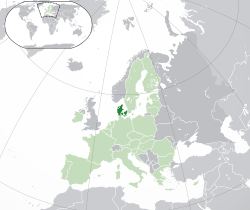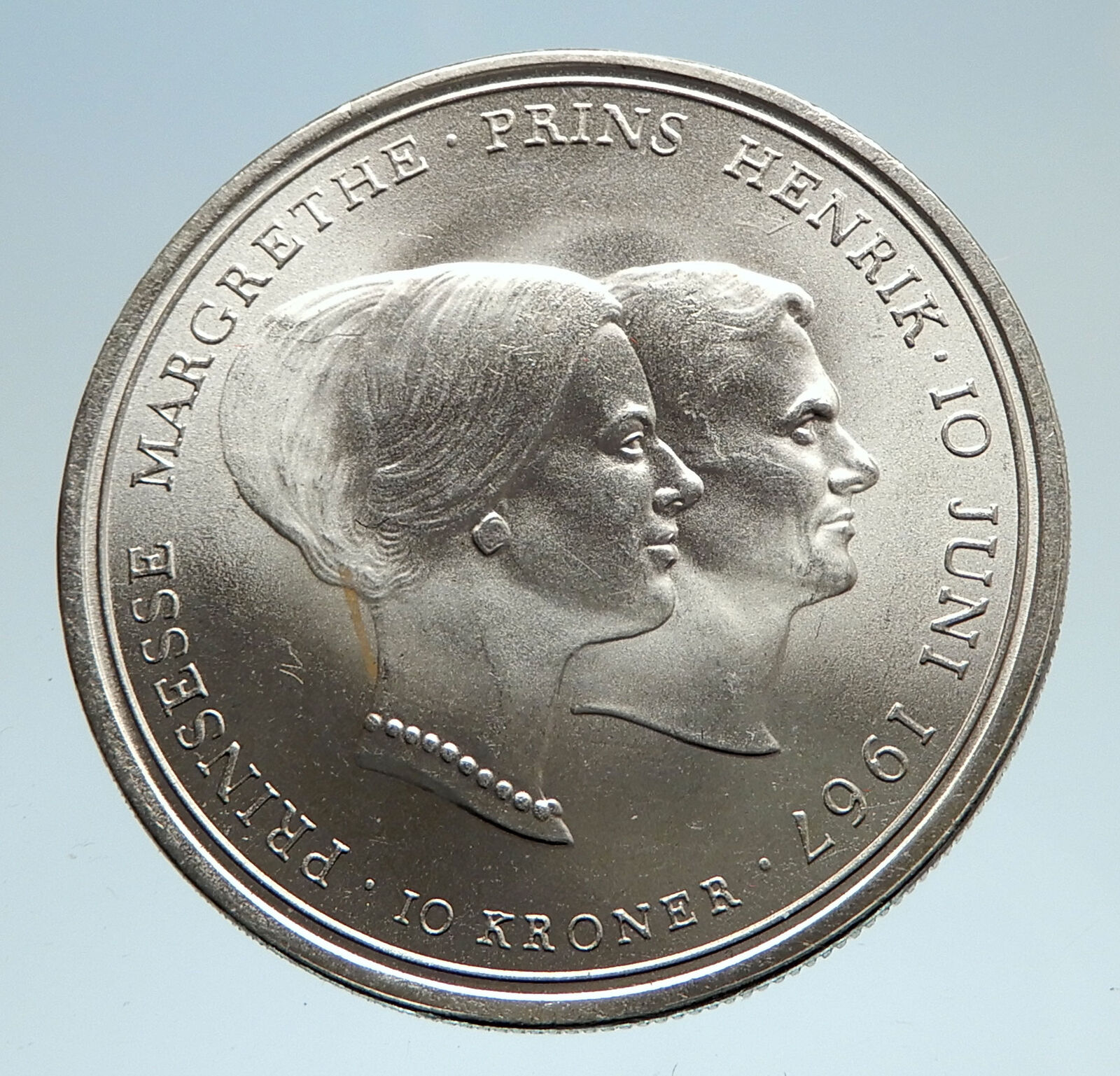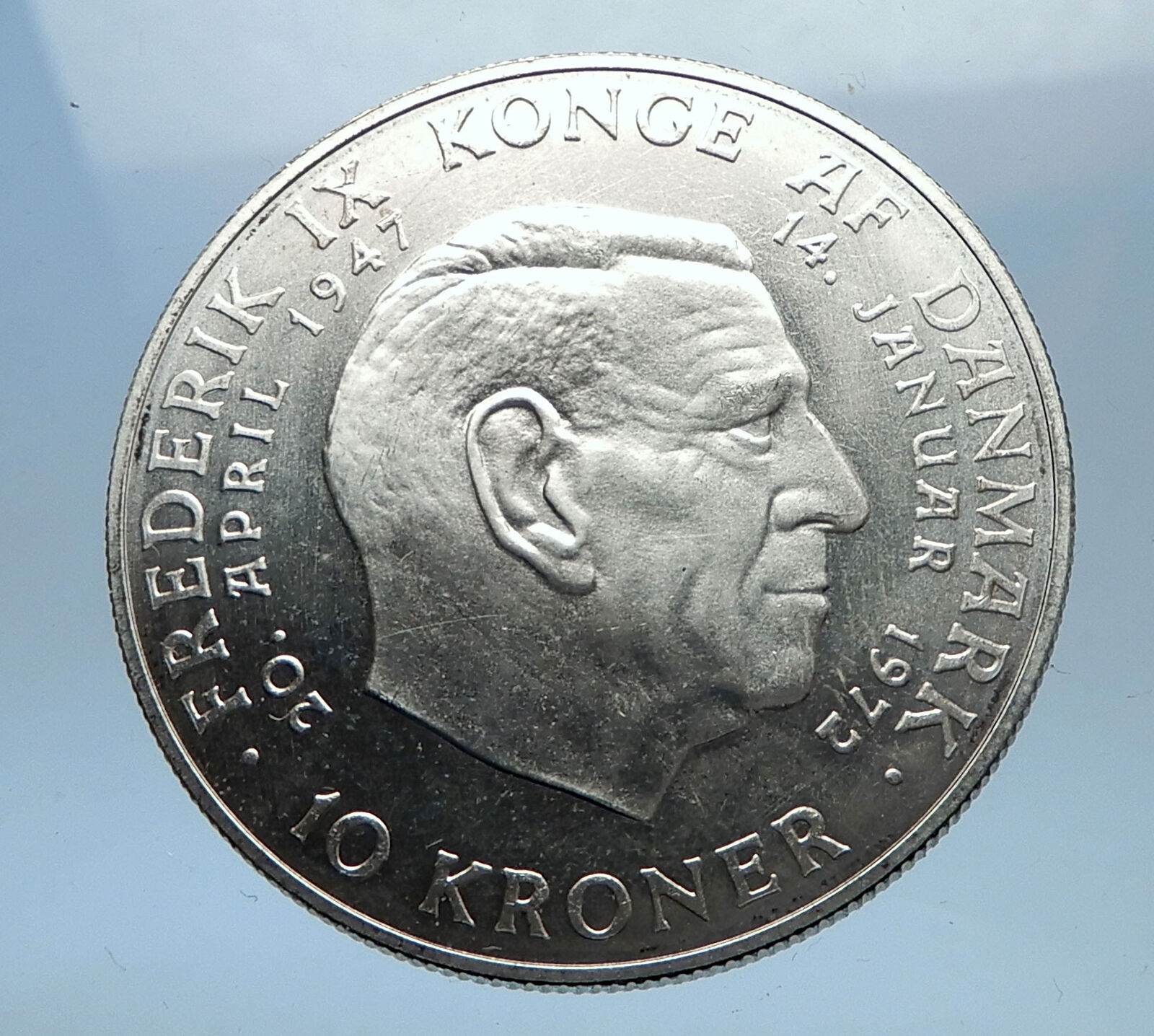|
Denmark under Christian
VII – 14 January 1766 – 13 March 1808
1771-79 Bronze 1 Skilling Dansk 29mm (10.60 grams)
Reference: KM# 616, C# 47
7CC7, Crowned double Christian VII monogram.
1 SKILLING DANSKE · K · M · 1771·, Value and
date on five lines.
Coin Notes:
This coin was minted from 1771 to 1786 with
“1771” frozen date in over 54 million pieces.
Size and weight of coin may vary from 27 to
31,45 mm. and from 8.83 to 14 grams
respectively. Many variants are present and in
Krause only the main and the errors are
considered to distinguish the great number of
those variants. Note that this coin was largely
used and so 99% of the coinage is in poor
condition (UNC or BU types are of greatest
rarity) so coins in high grade are often
counterfeits. These fake coin can be recognized
by the raised rim and are quite always made of
bronze instead of copper.
You are bidding on the exact item pictured, provided with a Certificate of Authenticity and Lifetime Guarantee of Authenticity.
 Christian VII (29 January 1749 – 13 March 1808) was a monarch of the House of Oldenburg who was King of Denmark–Norway and Duke of Schleswig and Holstein from 1766 until his death in 1808. For his motto he chose: “Gloria ex amore patriae” (“glory through love of the fatherland”). Christian VII (29 January 1749 – 13 March 1808) was a monarch of the House of Oldenburg who was King of Denmark–Norway and Duke of Schleswig and Holstein from 1766 until his death in 1808. For his motto he chose: “Gloria ex amore patriae” (“glory through love of the fatherland”).
Christian VII’s reign was marked by mental illness and for most of his reign Christian was only nominally king. His half-brother Frederick was designated as regent of Denmark-Norway in 1772. From 1784 until Christian VII’s death in 1808, Christian’s son, later Frederick VI, acted as unofficial regent.
After a long period of infirmity, Frederick V died on 14 January 1766, just 42 years old. Later the same day, Christian was proclaimed king from the balcony of Christiansborg Palace, a few weeks before his 17th birthday. Christian’s reign was marked by mental illness which affected government decisions, and for most of his reign Christian was only nominally king. His court physicians were especially worried by his frequent masturbation. His royal advisers changed depending on who won power struggles around the throne.
The young King was betrothed to his fifteen-year-old cousin Princess Caroline Matilda, sister of George III of the United Kingdom, who was anxious about the marriage but not aware that the bridegroom was mentally ill. The dynastic marriage took place at Christiansborg Palace on 8 November 1766. After his marriage, he abandoned himself to the worst excesses, especially sexual promiscuity. In 1767, he entered into a relationship with the courtesan Støvlet-Cathrine. He ultimately sank into a condition of mental stupor. Symptoms during this time included paranoia, self-mutilation and hallucinations.
The progressive and radical thinker Johann Friedrich Struensee, Christian’s personal physician, became his advisor and rose steadily in power in the late 1760s to de facto regent of the country, where he introduced widespread progressive reforms. Struensee was a protégé of an Enlightenment circle of aristocrats that had been rejected by the court in Copenhagen. He was a skilled doctor, and having somewhat restored the king’s health while visiting the Schleswig-Holstein area, he gained the king’s affection. He was retained as travelling physician (Livmedikus hos Kong Christian VII) on 5 April 1768, and accompanied the entourage on the King’s foreign tour to Paris and London via Hannover from 6 May 1768 to 12 January 1769. He was given the title of State Councilor (etatsråd) on 12 May 1768, barely a week after leaving Altona. The neglected and lonely Caroline Matilda entered into an affair with Struensee.
From 1770 to 1772, Struensee was de facto regent of the country, and introduced progressive reforms signed into law by Christian VII. Struensee was deposed by a coup in 1772 after which the country was ruled by Christian’s stepmother, Juliane Marie of Brunswick-Wolfenbüttel, his half-brother Frederick and the Danish politician Ove Høegh-Guldberg.
The king divorced Caroline Matilda in 1772, after they produced two children: the future King Frederick VI and Princess Louise Auguste. Struensee, who had enacted many modernising and emancipating reforms, was arrested and executed the same year. Christian signed Struensee’s arrest and execution warrant under pressure from his stepmother, queen Juliana Maria, who had led the movement to have the marriage ended. Caroline Matilda, retaining her title but not her children, eventually left Denmark, and passed her remaining days in exile at Celle Castle in her brother’s German territory, the Electorate of Hanover. She died there of scarlet fever on 10 May 1775, at the age of 23.

 Denmark is a Scandinavian country in Europe. The southernmost of the Nordic countries, it is southwest of Sweden and south of Norway, and bordered to the south by Germany. The Kingdom of Denmark is a sovereign state that comprises Denmark proper and two autonomous constituent countries in the North Atlantic Ocean: the Faroe Islands and Greenland. Denmark has an area of 42,924 square kilometres (16,573 sq mi), and a population of 5.7 million. The country consists of a peninsula, Jutland, and an archipelago of 443 named islands, of which around 70 are inhabited. The islands are characterised by flat, arable land and sandy coasts, low elevation and a temperate climate. Denmark is a Scandinavian country in Europe. The southernmost of the Nordic countries, it is southwest of Sweden and south of Norway, and bordered to the south by Germany. The Kingdom of Denmark is a sovereign state that comprises Denmark proper and two autonomous constituent countries in the North Atlantic Ocean: the Faroe Islands and Greenland. Denmark has an area of 42,924 square kilometres (16,573 sq mi), and a population of 5.7 million. The country consists of a peninsula, Jutland, and an archipelago of 443 named islands, of which around 70 are inhabited. The islands are characterised by flat, arable land and sandy coasts, low elevation and a temperate climate.
 The unified kingdom of Denmark emerged in the 10th century as a proficient seafaring nation in the struggle for control of the Baltic Sea. Denmark, Sweden and Norway were ruled together under the Kalmar Union, established in 1397 and ending with Swedish secession in 1523. Denmark and Norway remained under the same monarch until the union was dissolved by outside forces in 1814. The deterioration of the Kingdom of Norway, caused by the Black Death, made it possible for Denmark to inherit an expansive colonial empire from this union-of which the Faroe Islands and Greenland are remnants. Beginning in the 17th century, there were several cessions of territory; these culminated in the 1830s with a surge of nationalist movements, which were defeated in the 1864 Second Schleswig War. Denmark remained neutral during World War I. In April 1940, a German invasion saw brief military skirmishes while the Danish resistance movement was active from 1943 until the German surrender in May 1945. An industrialized exporter of agricultural produce in the second half of the 19th century, Denmark introduced social and labour-market reforms in the early 20th century that created the basis for the present welfare state model with a highly developed mixed economy. The unified kingdom of Denmark emerged in the 10th century as a proficient seafaring nation in the struggle for control of the Baltic Sea. Denmark, Sweden and Norway were ruled together under the Kalmar Union, established in 1397 and ending with Swedish secession in 1523. Denmark and Norway remained under the same monarch until the union was dissolved by outside forces in 1814. The deterioration of the Kingdom of Norway, caused by the Black Death, made it possible for Denmark to inherit an expansive colonial empire from this union-of which the Faroe Islands and Greenland are remnants. Beginning in the 17th century, there were several cessions of territory; these culminated in the 1830s with a surge of nationalist movements, which were defeated in the 1864 Second Schleswig War. Denmark remained neutral during World War I. In April 1940, a German invasion saw brief military skirmishes while the Danish resistance movement was active from 1943 until the German surrender in May 1945. An industrialized exporter of agricultural produce in the second half of the 19th century, Denmark introduced social and labour-market reforms in the early 20th century that created the basis for the present welfare state model with a highly developed mixed economy.
The Constitution of Denmark was signed on 5 June 1849, ending the absolute monarchy which had begun in 1660. It establishes a constitutional monarchy-the current monarch is Queen Margrethe II-organised as a parliamentary democracy. The government and national parliament are seated in Copenhagen, the nation’s capital, largest city and main commercial centre. Denmark exercises hegemonic influence in the Danish Realm, devolving powers to handle internal affairs. Denmark became a member of the European Economic Community (now the EU) in 1973, maintaining certain opt-outs; it retains its own currency, the krone. It is among the founding members of NATO, the Nordic Council, the OECD, OSCE, and the United Nations; it is also part of the Schengen Area.
Danes enjoy a high standard of living and the country ranks highly in some metrics of national performance, including education, health care, protection of civil liberties, democratic governance, prosperity and human development. The country ranks as having the world’s highest social mobility, a high level of income equality, is the least corrupt country in the world, has one of the world’s highest per capita incomes, and one of the world’s highest personal income tax rates. A large majority of Danes are members of the Lutheran State Church, though the Constitution guarantees freedom of religion.
|





 Christian VII (29 January 1749 – 13 March 1808) was a monarch of the House of Oldenburg who was King of Denmark–Norway and Duke of Schleswig and Holstein from 1766 until his death in 1808. For his motto he chose: “Gloria ex amore patriae” (“glory through love of the fatherland”).
Christian VII (29 January 1749 – 13 March 1808) was a monarch of the House of Oldenburg who was King of Denmark–Norway and Duke of Schleswig and Holstein from 1766 until his death in 1808. For his motto he chose: “Gloria ex amore patriae” (“glory through love of the fatherland”).
 Denmark is a Scandinavian country in Europe. The southernmost of the Nordic countries, it is southwest of Sweden and south of Norway, and bordered to the south by Germany. The Kingdom of Denmark is a sovereign state that comprises Denmark proper and two autonomous constituent countries in the North Atlantic Ocean: the Faroe Islands and Greenland. Denmark has an area of 42,924 square kilometres (16,573 sq mi), and a population of 5.7 million. The country consists of a peninsula, Jutland, and an archipelago of 443 named islands, of which around 70 are inhabited. The islands are characterised by flat, arable land and sandy coasts, low elevation and a temperate climate.
Denmark is a Scandinavian country in Europe. The southernmost of the Nordic countries, it is southwest of Sweden and south of Norway, and bordered to the south by Germany. The Kingdom of Denmark is a sovereign state that comprises Denmark proper and two autonomous constituent countries in the North Atlantic Ocean: the Faroe Islands and Greenland. Denmark has an area of 42,924 square kilometres (16,573 sq mi), and a population of 5.7 million. The country consists of a peninsula, Jutland, and an archipelago of 443 named islands, of which around 70 are inhabited. The islands are characterised by flat, arable land and sandy coasts, low elevation and a temperate climate. The unified kingdom of Denmark emerged in the 10th century as a proficient seafaring nation in the struggle for control of the Baltic Sea. Denmark, Sweden and Norway were ruled together under the Kalmar Union, established in 1397 and ending with Swedish secession in 1523. Denmark and Norway remained under the same monarch until the union was dissolved by outside forces in 1814. The deterioration of the Kingdom of Norway, caused by the Black Death, made it possible for Denmark to inherit an expansive colonial empire from this union-of which the Faroe Islands and Greenland are remnants. Beginning in the 17th century, there were several cessions of territory; these culminated in the 1830s with a surge of nationalist movements, which were defeated in the 1864 Second Schleswig War. Denmark remained neutral during World War I. In April 1940, a German invasion saw brief military skirmishes while the Danish resistance movement was active from 1943 until the German surrender in May 1945. An industrialized exporter of agricultural produce in the second half of the 19th century, Denmark introduced social and labour-market reforms in the early 20th century that created the basis for the present welfare state model with a highly developed mixed economy.
The unified kingdom of Denmark emerged in the 10th century as a proficient seafaring nation in the struggle for control of the Baltic Sea. Denmark, Sweden and Norway were ruled together under the Kalmar Union, established in 1397 and ending with Swedish secession in 1523. Denmark and Norway remained under the same monarch until the union was dissolved by outside forces in 1814. The deterioration of the Kingdom of Norway, caused by the Black Death, made it possible for Denmark to inherit an expansive colonial empire from this union-of which the Faroe Islands and Greenland are remnants. Beginning in the 17th century, there were several cessions of territory; these culminated in the 1830s with a surge of nationalist movements, which were defeated in the 1864 Second Schleswig War. Denmark remained neutral during World War I. In April 1940, a German invasion saw brief military skirmishes while the Danish resistance movement was active from 1943 until the German surrender in May 1945. An industrialized exporter of agricultural produce in the second half of the 19th century, Denmark introduced social and labour-market reforms in the early 20th century that created the basis for the present welfare state model with a highly developed mixed economy.




